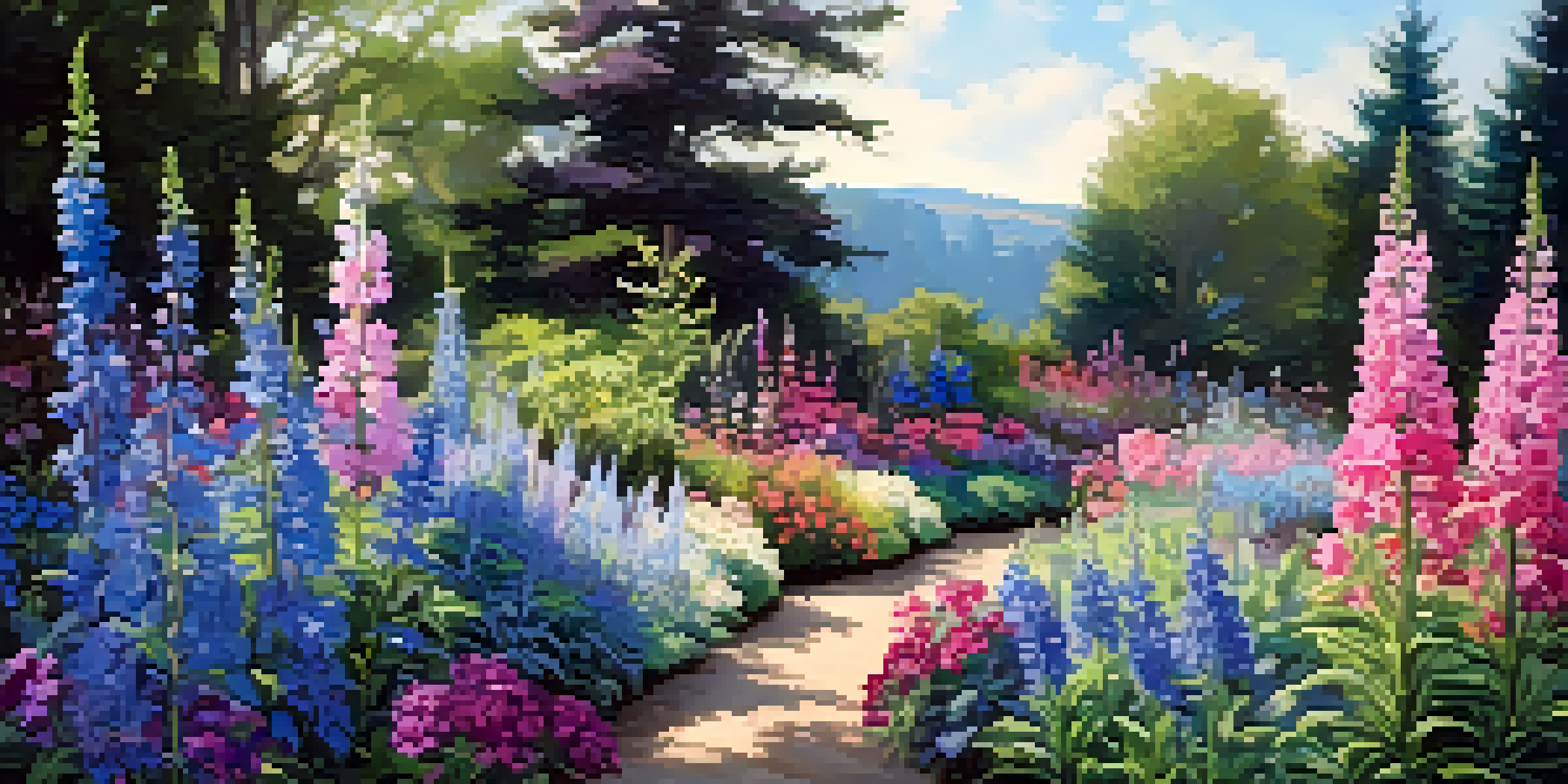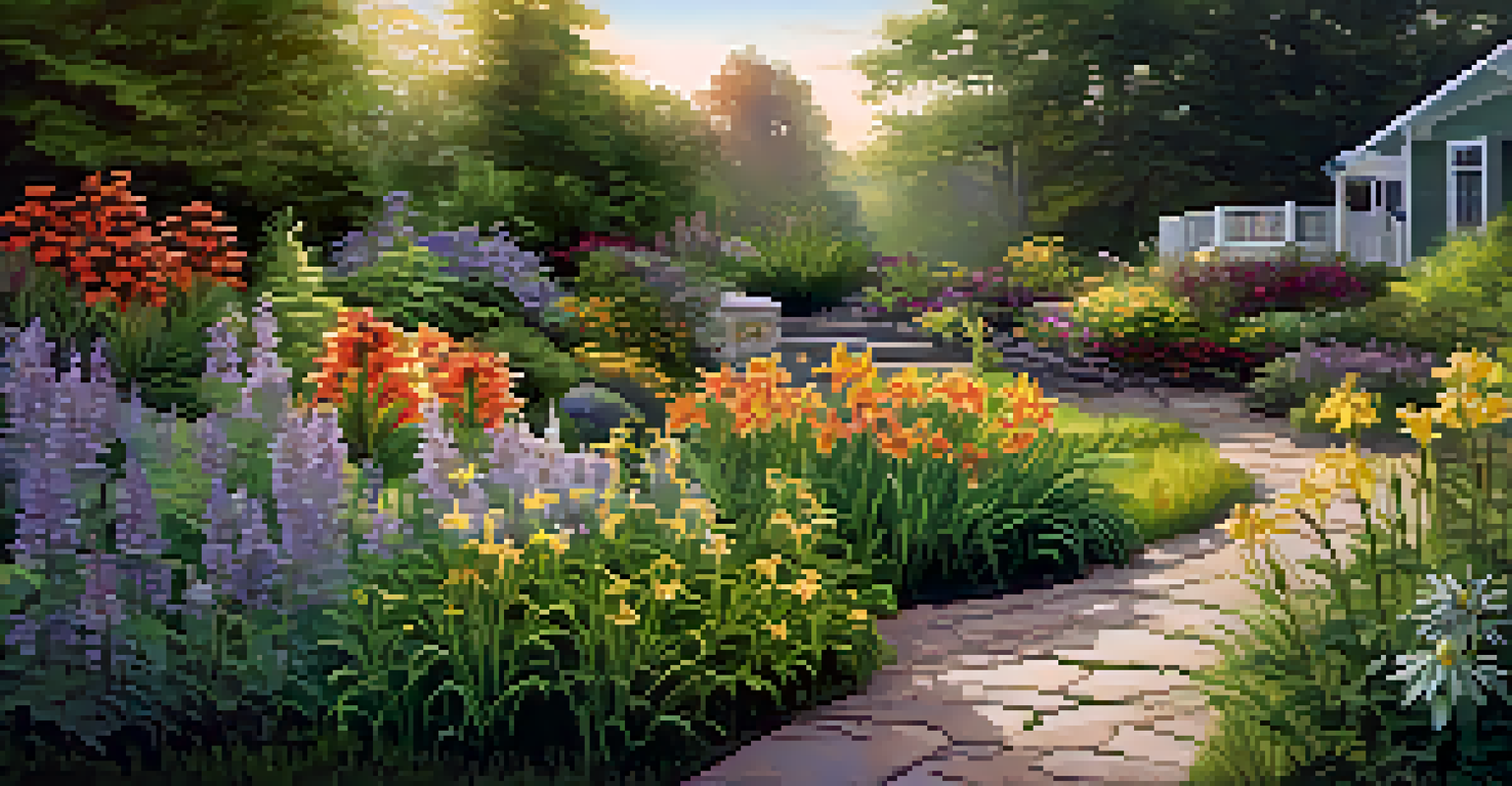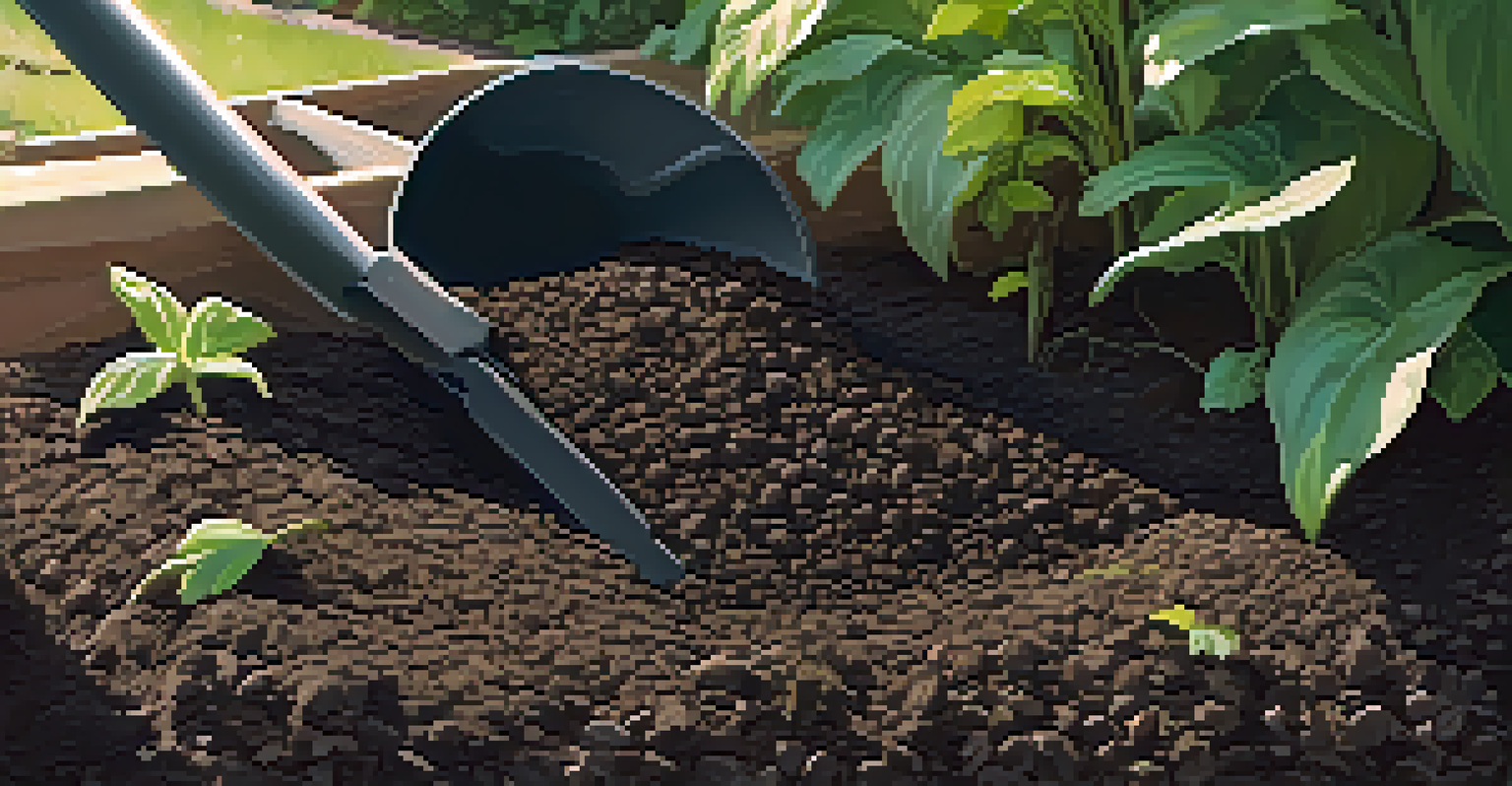Creating a Perennial Garden: Design Ideas and Tips

Understanding the Basics of Perennial Gardens
A perennial garden is a vibrant space filled with plants that return year after year. Unlike annuals, which need to be replanted each season, perennials bloom in cycles, often providing color and life throughout different times of the year. This means less work for you in the long run, making them a smart choice for busy gardeners.
The garden suggests there might be a place where we can meet nature halfway.
Choosing the right perennials is key to creating a garden that thrives. Think about your local climate, soil type, and how much sunlight the area receives. For example, if you live in a sunny area, you might opt for sun-loving plants like coneflowers or daylilies, which can handle the heat and still look great.
By understanding these foundational elements, you can set the stage for a flourishing perennial garden. It’s all about selecting plants that will harmonize with your environment, ensuring that your garden becomes a beautiful, low-maintenance retreat.
Choosing the Right Plants for Your Garden
When selecting perennials, consider a mix of heights, colors, and bloom times to create visual interest. For instance, pairing tall plants like delphiniums with shorter ones like sedums can add depth to your garden bed. Additionally, mixing various colors can make your garden a feast for the eyes.

Don’t forget to incorporate plants that attract pollinators like bees and butterflies. Plants such as lavender and echinacea not only add beauty but also support local wildlife, enhancing the ecosystem in your garden. It’s a win-win situation that adds life and movement to your space.
Perennials Simplify Gardening
Perennial gardens require less work over time since these plants return year after year, providing continuous beauty with minimal replanting.
Remember to choose plants that are suited to your gardening zone. This ensures that they will thrive in your local conditions, reducing the need for extra care. Researching and selecting the right plants will make your perennial garden easier to maintain and more enjoyable to watch grow over the years.
Designing Your Perennial Garden Layout
Before planting, sketch out your garden layout. This helps visualize where each plant will go, ensuring that taller plants don’t overshadow shorter ones. Think of your garden as a canvas; planning helps you create a beautiful, cohesive masterpiece.
In every gardener, there is a child who believes in The Seed Fairy.
Consider creating layers in your garden by placing taller perennials at the back and shorter ones at the front. This not only makes for an aesthetically pleasing design but also allows each plant to receive adequate sunlight. Walkways and borders can further enhance your garden’s structure and accessibility.
Lastly, think about paths and spaces for you to enjoy your garden. Adding stepping stones or gravel paths can create a friendly atmosphere for strolling and admiring your plants. This layout will invite you and your guests to explore the beauty of your perennial garden.
Incorporating Seasonal Interest in Your Garden
To keep your garden lively throughout the seasons, choose perennials that bloom at different times. For instance, you might plant spring-blooming tulips alongside summer-flowering phlox. This staggered blooming ensures your garden is never bare, providing visual delight year-round.
Incorporating foliage plants can also enhance your garden’s appeal. Plants like hostas and ferns offer beautiful leaves that add texture even when flowers are not in bloom. This diversity keeps your garden looking fresh and vibrant, regardless of the season.
Soil Preparation is Essential
Healthy soil enriched with organic matter is crucial for thriving perennials, ensuring they receive the necessary nutrients for robust growth.
By considering seasonal changes, you can create a dynamic garden that evolves with the year. This approach not only enhances beauty but also connects you to the natural rhythms of the environment, making gardening an even more rewarding experience.
Soil Preparation: The Key to Thriving Perennials
Healthy soil is the foundation of a successful perennial garden. Before planting, take the time to amend your soil with organic matter, such as compost. This enriches the soil, providing your plants with the nutrients they need to grow strong and vibrant.
Testing your soil’s pH can also guide you in making appropriate adjustments. Most perennials prefer a slightly acidic to neutral pH, so knowing your soil type allows you to tailor your amendments effectively. Simple testing kits are available at garden centers and can provide valuable insights.
Once your soil is prepared, you’ll set your perennials up for success. Healthy soil not only promotes robust growth but also enhances water retention and drainage, creating the perfect environment for your plants to thrive.
Watering Techniques for Your Perennial Garden
Establishing a consistent watering routine is crucial for your perennials, especially during their first growing season. Deep watering encourages strong root development, which helps plants become more resilient over time. Aim for about an inch of water per week, adjusting based on rainfall and temperature.
Consider using mulch around your plants to help retain moisture and suppress weeds. Organic mulches, like shredded leaves or wood chips, can enrich the soil as they decompose, adding even more benefits to your garden. This simple step can save you time and effort in the long run.
Regular Maintenance Keeps Gardens Vibrant
Consistent care, including deadheading and seasonal tasks, helps maintain the beauty of your perennial garden throughout the year.
As your plants mature, they may require less frequent watering. Always observe your garden's needs; signs of wilting or yellowing leaves can indicate that your plants need more water. Adapting your watering techniques to your garden’s specific needs will help ensure a flourishing landscape.
Maintaining Your Perennial Garden Year-Round
Regular maintenance is the key to keeping your perennial garden looking its best. This includes deadheading spent blooms to encourage new growth and controlling weeds that compete for nutrients. A little effort each week can prevent bigger problems down the line, making maintenance manageable.
Seasonal tasks, such as cutting back perennials in the fall or spring, can promote healthier growth. Some plants benefit from being divided every few years, which helps them thrive and prevents overcrowding. This practice not only keeps your garden healthy but also allows you to share plants with friends.

Embrace the beauty of seasonal changes in your garden. By adjusting your maintenance routine throughout the year, you’ll not only keep your garden looking pristine but also enjoy the evolving beauty it offers with each season.